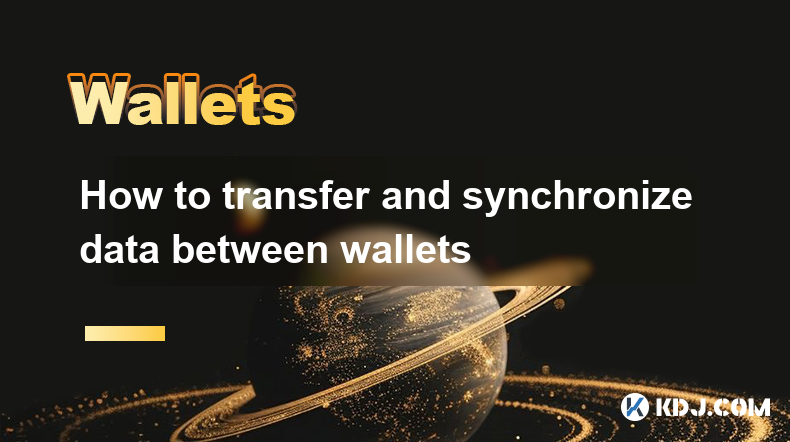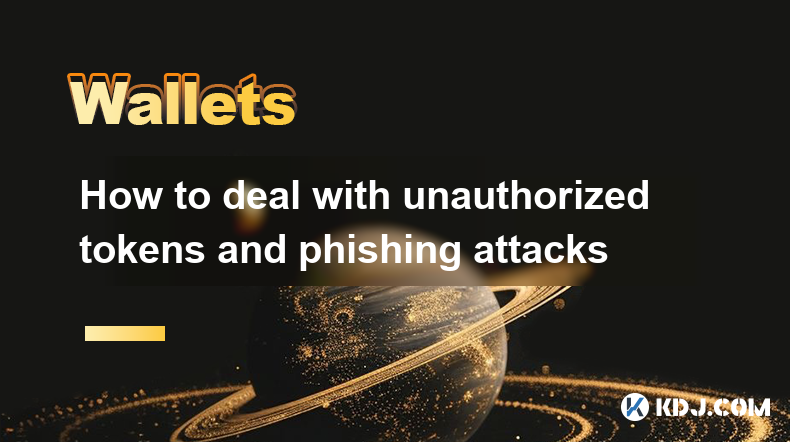-
 Bitcoin
Bitcoin $96,423.2361
-1.98% -
 Ethereum
Ethereum $2,687.4326
-2.59% -
 XRP
XRP $2.5818
-3.06% -
 Tether USDt
Tether USDt $0.9998
-0.03% -
 BNB
BNB $655.8685
0.40% -
 Solana
Solana $171.1929
-2.80% -
 USDC
USDC $1.0000
0.01% -
 Dogecoin
Dogecoin $0.2440
-3.60% -
 Cardano
Cardano $0.7663
-4.19% -
 TRON
TRON $0.2378
-4.96% -
 Chainlink
Chainlink $17.4954
-4.50% -
 Sui
Sui $3.3455
-4.52% -
 Avalanche
Avalanche $24.8717
-1.21% -
 Stellar
Stellar $0.3278
-3.39% -
 Litecoin
Litecoin $129.5275
-3.78% -
 Hedera
Hedera $0.2157
-1.77% -
 Toncoin
Toncoin $3.6223
1.02% -
 UNUS SED LEO
UNUS SED LEO $9.7265
-0.20% -
 Shiba Inu
Shiba Inu $0.0...01523
-2.39% -
 Hyperliquid
Hyperliquid $24.7464
-2.04% -
 Polkadot
Polkadot $5.0989
0.41% -
 MANTRA
MANTRA $7.5112
-1.79% -
 Bitcoin Cash
Bitcoin Cash $317.7396
-2.92% -
 Bitget Token
Bitget Token $5.0163
7.37% -
 Ethena USDe
Ethena USDe $0.9988
-0.09% -
 Dai
Dai $1.0002
0.02% -
 Uniswap
Uniswap $8.7946
-5.33% -
 Monero
Monero $232.2611
-1.64% -
 NEAR Protocol
NEAR Protocol $3.4081
-2.87% -
 Pepe
Pepe $0.0...09228
-5.30%
How to prevent phishing attacks?
Recognizing phishing tactics and red flags plays a vital role in preventing unauthorized access to cryptocurrency accounts, safeguarding digital assets from malicious attempts.
Feb 20, 2025 at 10:48 am

Key Points
- Recognize phishing tactics and red flags
- Secure your devices and accounts
- Be vigilant with emails, links, and attachments
- Educate yourself and others about phishing
- Utilize anti-phishing tools and resources
Preventing Phishing Attacks: A Comprehensive Guide
Phishing attacks are a pervasive threat in the cryptocurrency realm, targeting unsuspecting users to steal their digital assets. These attacks can come in various forms, such as fraudulent emails, malicious links, and bogus websites. To safeguard your cryptocurrency and protect yourself from falling victim to these malicious attempts, it is imperative to implement effective preventative measures. This guide provides a detailed roadmap to help you navigate the treacherous waters of phishing and secure your digital assets.
Recognizing Phishing Tactics and Red Flags
The first step in preventing phishing attacks is to become familiar with the common tactics and red flags employed by these malicious actors. Phishing emails often exhibit certain characteristics that can raise suspicion, including:
- Urgent or threatening language: Emails that create a sense of urgency or threaten consequences for immediate action are often red flags.
- Generic greetings: Phishing emails often use generic salutations such as "Dear user" or "Dear customer" instead of addressing the recipient by their name.
- Poor grammar and spelling: Legitimate emails from reputable companies typically adhere to proper grammar and spelling standards, while phishing emails may contain errors.
- Suspicious links and attachments: Phishing emails frequently include links that redirect users to malicious websites or attachments that contain malware.
- Requests for personal information: Phishing emails may ask for sensitive information such as passwords, credit card numbers, or private keys.
Recognizing these red flags can empower you to identify and avoid potential phishing attempts, preventing unauthorized access to your cryptocurrency accounts.
Securing Your Devices and Accounts
Securing your devices and accounts is crucial to mitigating the risk of phishing attacks. This includes implementing the following measures:
- Use strong passwords: Create robust passwords for all your online accounts, ensuring they are complex and unique.
- Enable two-factor authentication (2FA): Add an extra layer of security by enabling 2FA, which requires you to provide an additional verification code when logging in to your accounts.
- Keep software and operating systems up to date: Regularly update your software and operating systems to patch any security vulnerabilities that could be exploited by phishing attacks.
- Install anti-phishing software: Utilize reputable anti-phishing software that can detect and block malicious emails and websites.
- Be cautious when downloading files or clicking links: Exercise caution when downloading files or clicking links, especially from unknown sources or suspicious emails.
By implementing these security measures, you significantly minimize the likelihood of phishing attacks compromising your devices and accounts.
Vigilance with Emails, Links, and Attachments
Maintaining vigilance with emails, links, and attachments is paramount in preventing phishing attacks. Be cautious when interacting with any online communication, adopting the following practices:
- Never click on unfamiliar links or open attachments from unknown senders: Hover over links before clicking them to verify their legitimacy, and avoid opening unsolicited attachments.
- Be wary of emails requesting personal information: Legitimate companies will not ask for sensitive information via email, so treat such requests with suspicion.
- Use caution when visiting websites: Carefully inspect website URLs for any inconsistencies or suspicious characters that may indicate a phishing attempt.
- Check sender email addresses: Examine email addresses closely for any slight variations or misspellings that could indicate a spoofed address.
- Report suspicious emails: Forward any suspicious emails to the relevant authorities or report them to the sender's email provider.
By adhering to these vigilant practices, you effectively safeguard yourself from phishing attacks that may attempt to deceive you through fraudulent emails, links, and attachments.
Educating Yourself and Others About Phishing
Educating yourself and spreading awareness about phishing is crucial in combatting these malicious attempts. Consider the following actions:
- Stay informed about phishing tactics: Familiarize yourself with the latest phishing techniques and trends to stay ahead of evolving threats.
- Share your knowledge with others: Educate your friends, family, and colleagues about phishing attacks to help them protect themselves.
- Report phishing attempts: If you encounter a phishing attempt, report it to the relevant authorities or the sender's email provider to help them track and mitigate these threats.
By investing in education and awareness, you empower individuals within your circle to recognize and combat phishing attacks, creating a more secure online environment for everyone.
Utilizing Anti-Phishing Tools and Resources
Leveraging anti-phishing tools and resources can further enhance your protection against these malicious attacks. Consider utilizing the following resources:
- Anti-phishing browser extensions: Install reputable browser extensions that can block phishing websites and alert you to potential threats.
- Email security plugins: Utilize email security plugins that scan incoming emails for phishing attempts and provide real-time protection.
- Phishing awareness training: Participate in phishing awareness training programs to enhance your ability to identify and avoid these attacks.
Incorporating these tools and resources into your cybersecurity arsenal provides additional safeguards to help you navigate the digital landscape securely and protect your cryptocurrency assets from phishing attempts.
FAQs
Q: What is phishing?
A: Phishing is a malicious attempt to obtain sensitive information, such as passwords, credit card numbers, or private keys, by disguising oneself as a trustworthy entity in electronic communication.
Q: What are the common forms of phishing attacks?
A: Phishing attacks commonly manifest as fraudulent emails, malicious links, and bogus websites that mimic legitimate entities to deceive users.
Q: How can I avoid phishing attacks?
A: To prevent phishing attacks, it is essential to recognize phishing tactics and red flags, secure your devices and accounts, maintain vigilance with emails, links, and attachments, educate yourself and others about phishing, and utilize anti-phishing tools and resources.
Q: What should I do if I fall victim to a phishing attack?
A: If you believe you have fallen victim to a phishing attack, promptly change your passwords, contact your bank or relevant financial institutions, and report the incident to the authorities or the sender's email provider.
Disclaimer:info@kdj.com
The information provided is not trading advice. kdj.com does not assume any responsibility for any investments made based on the information provided in this article. Cryptocurrencies are highly volatile and it is highly recommended that you invest with caution after thorough research!
If you believe that the content used on this website infringes your copyright, please contact us immediately (info@kdj.com) and we will delete it promptly.
- Story (IP), CLANKER, and DOGEAI Are the Top-Performing AI Coins of the Third Week of February 2025
- 2025-02-22 14:30:25
- The United States Securities and Exchange Commission (SEC) has concluded its probe into non-fungible token (NFT) marketplace OpenSea
- 2025-02-22 14:30:25
- Libra staged a hunting game: nearly 30% of large investors took over at high prices, and more than 70,000 addresses were harvested
- 2025-02-22 14:30:25
- California Recommends Steve Jobs for the $1 American Innovation Coin
- 2025-02-22 14:30:25
- Onyxcoin (XCN) May Surge 30% Before March Despite Ongoing Bearish Trend
- 2025-02-22 14:30:25
- Pi Network's Open Network Launch: A 65% Pi Coin Crash Amidst Fraud Allegations
- 2025-02-22 14:30:25
Related knowledge

What are cold storage and hot storage? Which one is safer?
Feb 22,2025 at 03:18pm
Key Points:Cold storage and hot storage are two methods of storing cryptocurrencies.Cold storage involves storing cryptocurrencies offline, while hot storage involves storing them online.Cold storage is generally considered safer than hot storage, as it is not connected to the internet and is therefore less susceptible to hacking.Cold StorageCold storag...

How to synchronize wallets in multiple devices and browsers
Feb 22,2025 at 09:18am
Key Points:Understand the different types of cryptocurrency wallets and their synchronization capabilities.Learn how to synchronize hardware wallets with multiple devices.Discover the steps involved in synchronizing software wallets across platforms.Explore the options for synchronizing mobile wallets on different devices.Gain insight into browser exten...

How to transfer and synchronize data between wallets
Feb 21,2025 at 12:25pm
Key Points:Understanding different wallet types and their capabilitiesIdentifying similarities and differences between walletsExploring options for transferring and synchronizing dataEnsuring data security and integrity during transferAddressing common challenges and troubleshooting tipsHow to Transfer and Synchronize Data Between Cryptocurrency Wallets...

Why do you need to understand Ethereum network congestion and gas fees?
Feb 21,2025 at 04:48am
Key PointsUnderstanding Ethereum Network Congestion and Gas FeesGas Fees ExplainedFactors Affecting Network CongestionStrategies for Minimizing Gas FeesImpact of Ethereum UpgradesUnderstanding Ethereum Network Congestion and Gas FeesThe Ethereum network is a decentralized platform that hosts a vast ecosystem of decentralized applications (dApps), non-fu...

How to participate in DAO voting and governance?
Feb 21,2025 at 03:42pm
Key Points:Overview of DAO Voting and GovernanceUnderstanding DAO Structures and MembershipRole of DAO Tokens and Voting RightsParticipating in Voting and Proposal SubmissionLeveraging Governance Tools and PlatformsImpact of Voting Participation on DAO OutcomesBest Practices for Effective DAO GovernanceHow to Participate in DAO Voting and Governance1. U...

How to deal with unauthorized tokens and phishing attacks
Feb 21,2025 at 05:25am
Dealing with Unauthorized Tokens and Phishing Attacks in the Cryptocurrency CircleThe cryptocurrency market is rife with potential dangers, including unauthorized tokens and phishing attacks. To protect yourself from these threats, it's crucial to take proactive measures and be vigilant in your online activities.Key Points:Unauthorized Tokens: Tokens cr...

What are cold storage and hot storage? Which one is safer?
Feb 22,2025 at 03:18pm
Key Points:Cold storage and hot storage are two methods of storing cryptocurrencies.Cold storage involves storing cryptocurrencies offline, while hot storage involves storing them online.Cold storage is generally considered safer than hot storage, as it is not connected to the internet and is therefore less susceptible to hacking.Cold StorageCold storag...

How to synchronize wallets in multiple devices and browsers
Feb 22,2025 at 09:18am
Key Points:Understand the different types of cryptocurrency wallets and their synchronization capabilities.Learn how to synchronize hardware wallets with multiple devices.Discover the steps involved in synchronizing software wallets across platforms.Explore the options for synchronizing mobile wallets on different devices.Gain insight into browser exten...

How to transfer and synchronize data between wallets
Feb 21,2025 at 12:25pm
Key Points:Understanding different wallet types and their capabilitiesIdentifying similarities and differences between walletsExploring options for transferring and synchronizing dataEnsuring data security and integrity during transferAddressing common challenges and troubleshooting tipsHow to Transfer and Synchronize Data Between Cryptocurrency Wallets...

Why do you need to understand Ethereum network congestion and gas fees?
Feb 21,2025 at 04:48am
Key PointsUnderstanding Ethereum Network Congestion and Gas FeesGas Fees ExplainedFactors Affecting Network CongestionStrategies for Minimizing Gas FeesImpact of Ethereum UpgradesUnderstanding Ethereum Network Congestion and Gas FeesThe Ethereum network is a decentralized platform that hosts a vast ecosystem of decentralized applications (dApps), non-fu...

How to participate in DAO voting and governance?
Feb 21,2025 at 03:42pm
Key Points:Overview of DAO Voting and GovernanceUnderstanding DAO Structures and MembershipRole of DAO Tokens and Voting RightsParticipating in Voting and Proposal SubmissionLeveraging Governance Tools and PlatformsImpact of Voting Participation on DAO OutcomesBest Practices for Effective DAO GovernanceHow to Participate in DAO Voting and Governance1. U...

How to deal with unauthorized tokens and phishing attacks
Feb 21,2025 at 05:25am
Dealing with Unauthorized Tokens and Phishing Attacks in the Cryptocurrency CircleThe cryptocurrency market is rife with potential dangers, including unauthorized tokens and phishing attacks. To protect yourself from these threats, it's crucial to take proactive measures and be vigilant in your online activities.Key Points:Unauthorized Tokens: Tokens cr...
See all articles














![BONK The Meme Coin MORE THAN ORDINARY [DOG] on Solana BONK The Meme Coin MORE THAN ORDINARY [DOG] on Solana](/uploads/2025/02/22/cryptocurrencies-news/videos/bonk-meme-coin-ordinary-dog-solana/image-1.jpg)


































































